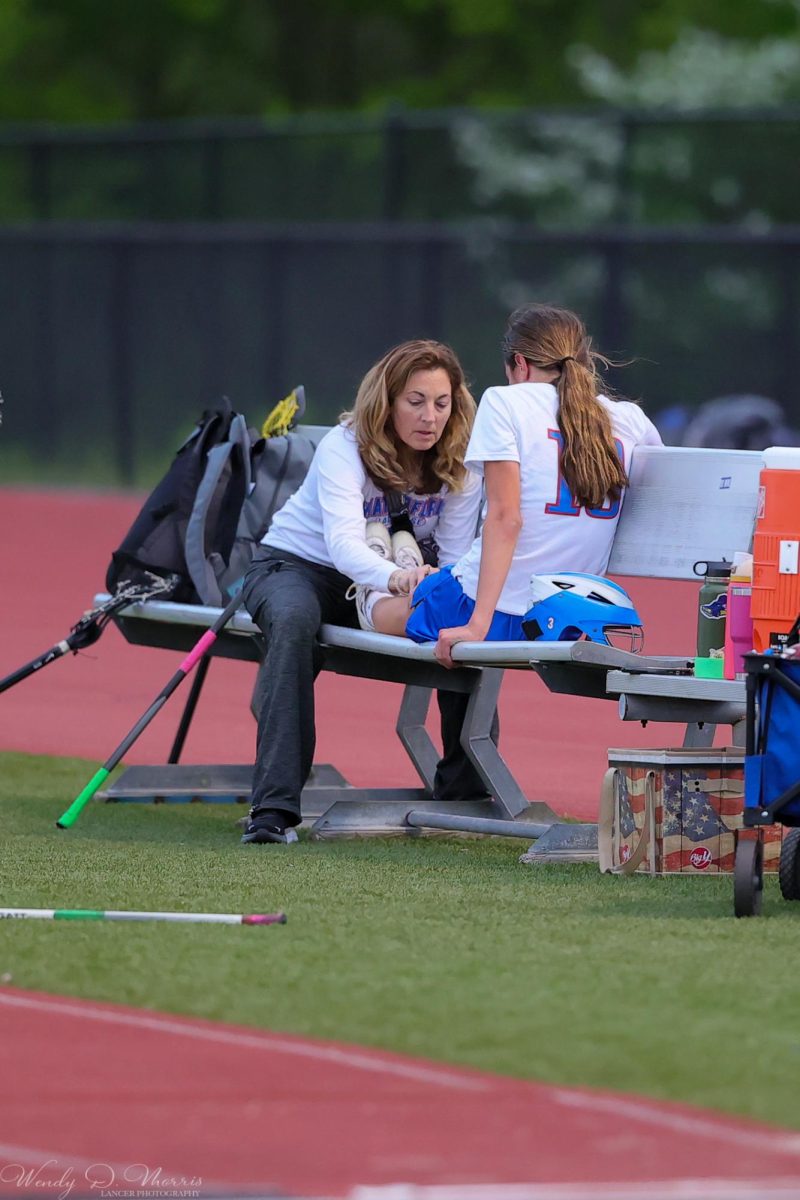In the competitive world of high school sports, student athletes are pushing their limits. However, too much intense physical activity can come with the risk of injuries, which can impact how they perform both on the field and in the classroom. From turf burn to sprains and fractures, these setbacks not only sideline athletes but challenge mental strength.
Junior soccer and lacrosse player, Sadie Tiven has had to deal with injuries. During her sophomore season of lacrosse, Sadie suffered an ACL tear during a home game. She said, “Physically the pain when I first got hurt wasn’t very good and then again after my surgery it was worse. There was no strength in my quad and my knee was weak as well.”.
While the people watching the game that day may feel bad in the moment, they don’t realize that it was not only a season-ending injury for her, but cost her all three of her junior year sports seasons as she will still not be recovered to play in the spring lacrosse season.
The mental strain of sports injuries can be equally difficult. Tiven said, ”Mentally it has been tough, when I first got hurt it was probably the worst part because I was just thinking about how I’m not going to have my junior year playing sports and missing out on good opportunities for myself.”
Research from NCAA’s Margot Putukian, shows that these injuries can lead to sadness, isolation, lack of motivation, and anger. For Sadie, the timing of her injury was inconvenient. Junior year is one of the years that matters most in terms of sports, especially if athletes are looking to continue their career in college. However, Sadie claims that she will get all the rest and recovery she needs during this time and is hoping to make a crazy comeback her senior year.
WHS athletic trainer Mrs. LaForte has been at WHS for over a year now and has had many experiences dealing with the injured. Mrs. LaForte said that she sees, “Probably around 9-15 a year, and 3 per season” season ending injuries during the school year. That’s about 2% of the student body at the school each year.
WHS has resources to help with recovery.
Doctors,athletic trainers, or whoever is treating the injured should never just tell someone to rest, instead help them to see what they can actively do to get better as each day goes by. LaForte said, – it’s best to tell them what you can work towards rather than just to rest; it motivates them more” She believes that the pool here at WHS is a helpful resource during this process, which is fortunate since most schools/facilities do not.
Balancing recovery with school and team commitments can be tough to juggle. A strong support system can help injured athletes shine in both their sports and studies.



